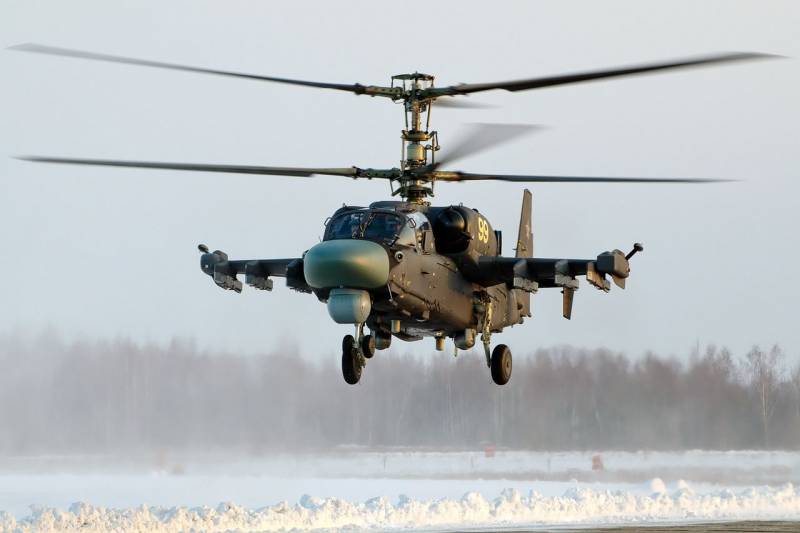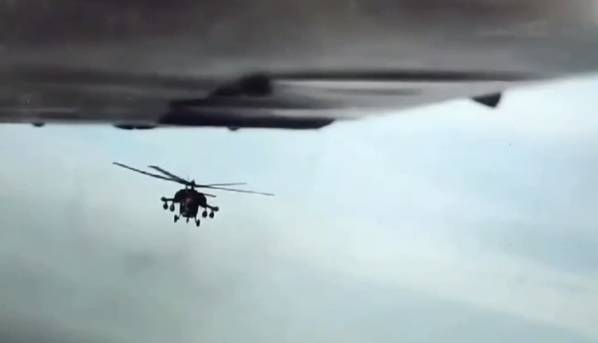Drones versus helicopters: the end of the era of attack helicopters

Ka-52
Despite the fact that during the Northern War attack helicopters, primarily the Ka-52, performed very well, the time for their mass combat use seems to be running out. So far, they are winning due to the “long arm” in the form of long-range ATGMs, the range and flight speed of which exceed the range and speed of conventional “infantry” ATGMs. Not even every MANPADS will reach a helicopter in response, especially considering the tactics of helicopters operating on short-term “jumps” from a low hover mode: “looked out, shot, hid.”
At the same time, the Ukrainian Armed Forces generally have relatively few modern medium-range air defense systems, and they cannot fully cover the entire front line with them. Therefore, a situation has arisen in which the Ka-52 can operate relatively calmly. We can say that they work as intended at the time of their creation. That is why they show high efficiency.
However, it is very likely that soon the main enemy of helicopters will be “flying mines” in the form of specialized UAVs. Similar, but stationary mines designed to block airfields or flight routes have existed for a long time. Installed in the right place, they wait for a helicopter to fly nearby and “listen” to the characteristic sound of the engines and the thermal field. Having determined that the target is nearby, they fire a charge in its direction - a “shock core”.
But the range of such mines is short, about 100 meters. They cannot cover an entire front or even a separate section of it. Despite the fact that both we and the NATO armies have them, the author has not come across a single mention of their use during the Northern Military District.
Now let’s imagine a small UAV that can patrol a given area for at least 4 hours. And also listen to the noise of the helicopter engine, and when you hear it, fly towards it. Moreover, unlike a UAV attack on a ground target (when it crashes in any case), if the helicopter misses, the attack can be repeated.
By the way, there are references that the well-known “Lancet” had a modification of the “UAV fighter”. In fact, a ready-made tool for fighting helicopters! Its speed capabilities - up to 300 km/h - are quite suitable for attacking it. Perhaps they are also suitable for diving attacks on low-flying attack aircraft on a collision course.
Unlike the already familiar Lancet variants, the anti-helicopter drone must be autonomous: patrol in a given area, find a target and attack it without the participation of an operator. However, the ability to communicate with the operator will also not hurt, for example, for preliminary guidance using radar data or for redirecting to an important ground target.
By the way, judging by open sources, something similar - autonomous mode, artificial intelligence - is planned for the new Lancets.
Half a dozen similar drones enough to cover a fairly wide area of the front around the clock. Of course, except for days with bad, windy weather. But on bad weather days, helicopters cannot always operate.
So, the main requirements for such a device are: autonomy, sufficient speed, including in a dive, flight altitude of 1–2 km, the ability to independently analyze noise and direction, and ideally also an infrared sensor. Of course, the microphone’s operation will be interfered with by the noise of the oncoming air flow and the sound of its own engine (a land-based anti-helicopter mine has fewer such problems), but these difficulties are surmountable: the characteristic frequencies of the helicopter engine and especially the main rotor can be distinguished. A video camera with the ability to analyze images, including the target’s thermal signature, would be another useful load for such a device.
Does all this look fantastic? Not at all. Changes in military affairs are happening very quickly now.
In the spring of 2022, Ukrainian grenade launchers and ATGM operators were still freely positioned on the roofs of high-rise buildings. And most often unnoticed.
During the assault on Mariupol, ours already used quadcopters and detected the enemy on the roofs. That is, they already saw where the ambushes were located, but they could not hit them on the move.
Closer to the fall of 2022, small bombs were already being attached to quadcopters with might and main, and the chances of such ambushes became much less.
And now FPV drones are already in full use - in fact, an advanced ATGM with a “long arm”.
And this is just one example of the development of tactical-grade drones.
The transition of drones to autonomous operation and independent selection of targets is no longer a fantasy. This is the prospect of the coming years, if not months.
Recently, the effectiveness of using helicopters as “drone fighters” was discussed, and even a short but heated debate arose about whether the existing on-board weapons are suitable for this, or whether it is worth installing multi-barreled machine guns, etc. I think that in light of the identified problem, this is a dubious activity . In several known cases of a helicopter attacking a drone, the drone flew along a given route and passively filmed what was happening with its built-in camera. Now let’s imagine that a drone can turn towards a helicopter and try to attack it itself... and the hunter turns into the victim!

A reconnaissance UAV flying near Cape Tarkhankut filmed an attempt by a Mi-28N helicopter to shoot it down with fire from an automatic 30-mm cannon.
The danger of this, the imminent use of “flying anti-helicopter torpedoes” is worth thinking about. How to protect helicopters from them, especially in the upper hemisphere? How to adapt the tactics of their use? Is it even worth planning the mass use of manned attack helicopters on the front line in the future?
This will probably only be possible under conditions of careful cover by electronic warfare and air defense systems, and with an active protection complex on board. Or will the next generation of attack helicopters be unmanned?
And the last.
This article has been thought about and written over the past few weeks. And now we read that the other day a Ukrainian FPV drone tried to attack the Ka-52! So the turn began even earlier than the author thought, although at a primitive level, in manual control mode. But it seems that time has already passed...
Information